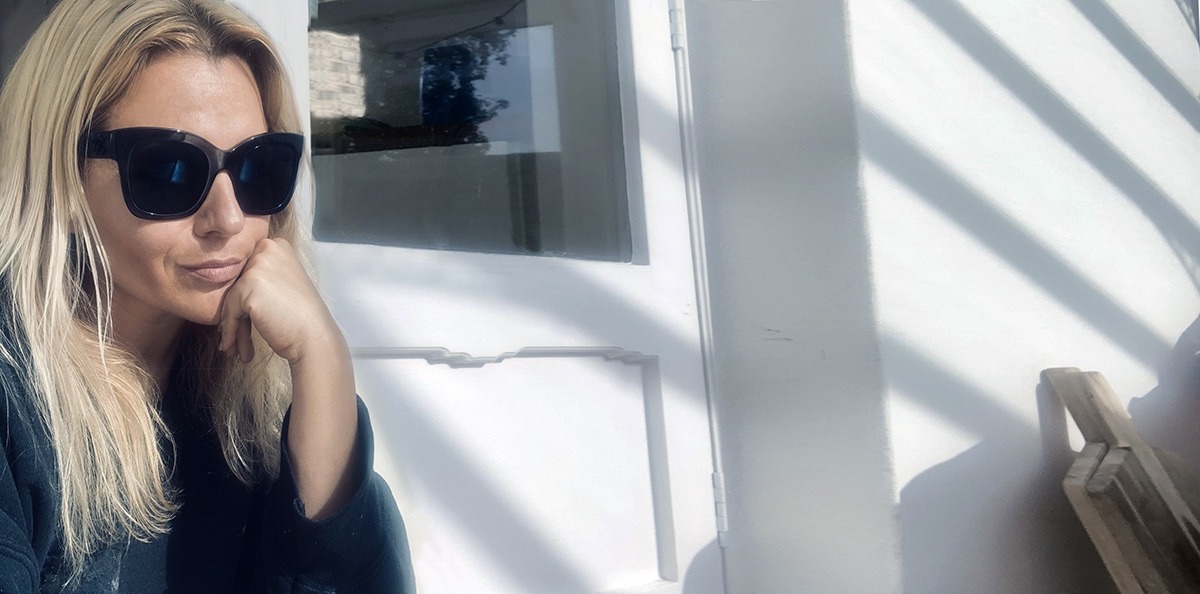Uncategorised
GG Stokes the queen of magazines – talks to Magazine
In her interview, chic city girl GG Stokes leaves no page left unturned
We’d forgive you for believing GG Stokes was born and raised among the monochrome structures of Fleet Street. With its array of publishing and fashion houses, it is perhaps the only fitting home for the woman whose life revolves around magazines. However, this stylish, turned artist first found herself hypnotised by the world of Haute Couture from her home in the verdant Cotswold country after spending her earliest moments on the shores of the Isle of Wight. After dedicating herself entirely to her art only a year ago, GG signed with Runway Gallery and continues to paint magazines – a trademark style to which she is instantly associable.
But, what can the woman at the top of the art magazine world teach Magazine? We sat down with GG to find out.
Hi, GG. Let’s start at the very beginning. When you embark on a new series, where do you start, and what does the creative process usually involve?
It generally comes from quite a personal standpoint. From there, a concept or theme builds. There is usually a leading element, feeling, or thought that triggers it. Then it develops from there.
How has your artistic technique developed throughout your career?
My technique has more to do with my practice or discipline at times. I only started painting properly about two years ago. I’ve always developed things from a personal point of view; it’s always been from a figurative standpoint, so that’s why I was drawn to fashion, and over the years, depending on what I have been doing, I have learned how to develop techniques and ideas.

I started painting at school and was taught in fine art, specifically in oils, and how the old masters did various things. I have a degree and Masters in photography, and I made a B line for fashion photography early on. Then, I enjoyed the concept side of shoots and the creative process far more than the more technical side and transitioned into working as a stylist and creative director.
My painting skills come from having a natural pull towards that discipline. It was a case of building on what I had been taught when I was younger, and then the rest came from practice, trial and error, but always quite a natural mark-making fluid space.
It’s hard to explain, but a lot of it feels natural. Although my paintings look pretty technical – and to a degree – how I shoot the objects I paint can be – I have learnt to trust the physical action of what I am doing, but I am still learning. You can think and plan ideas, but when you paint and work with oils, primarily, it becomes a far less calculated thing and a far more fluid exercise. It is dissimilar to being on a shoot; I really enjoy that.

Describe your work in no more than four words.
Figurative, forms, personal, nostalgic (at times).
Beyond the relationship between fashion and art, which other themes does your work pursue?
It depends on the series, but as mentioned, it comes from a personal standpoint. Those themes vary, but most in some way, shape or form revolve around female sexuality and empowerment. Visually, the main themes are among the forms and perspective. I paint magazines, so print media is definitely an influence. That’s where the nostalgia comes in; I have always loved printed images and words, specifically in magazines from an extremely young age.
Fast forward to working on shoots for print – I became a little obsessed with the concept of ‘the gutter’ in magazines, what that does to a DPS, and how the final layouts are mapped. You fit flat images into a physical form that’s both fluid and structured. That becomes a singular object to the people who buy them, and that’s always interested me. It’s almost sculptural and not a particularly direct way of communicating your creative vision, but nonetheless, the struggle was real, and I loved the challenge.
I also loved seeing how people more talented than me managed that task. From that point, I am subverting that idea by not showing images completely on the flat and distorting them. When I shoot them for the final paintings, I believe I am showing them as what they become, and almost how they can be seen, with movement, shine, and perspective shift the form. Maybe it’s less of a theme and sometimes more of an obsession.

If you had to choose another artist at Runway Gallery to collaborate with, who would it be, and why?
That’s a tough one for me. They are all great, but I am a big fan of Matthew Lawrence’s work. His mark-making, palette, subject matter and perspective is something I appreciate.
If you had to pinpoint a defining moment in your career, what would it be?
I would not have said it was a moment, more of an action, and a decision about two years ago to do something I really wanted to do. I released the fear and just went for it with no other agenda than trying to explore the thing I knew would make me the happiest. Putting a paintbrush to the canvas after years and years of avoidance and personal sabotage was a real education; let’s put it that way.
What memorable responses have you had to your work?
It is always wonderful when people respond well to my work – whether that’s in the form of comments on Instagram or purchases, or even commissions and the trust around that. When I started painting, there was a genuine response or happiness and understanding of what I can do or what I wanted to do. It was nice to feel a little more understood. My sister also likes some of the work in progress videos on Instagram and once told me she had watched one over and over again because she couldn’t believe I painted it. Things like that mean a lot and have made me smile.

Where in the world do you feel the most creative? What is it about that place that makes you feel that way?
London is my base, and my studio has very much become my creative haven. I truly love being a city girl, and London is my home. I feed off the energy London has and the communities that thrive here but in terms of being inspired or creative; It could be anywhere; travelling is always quite liberating.
However, I also have an exceptional place in my heart for the sea. I was born on the Isle of Wight into a family of avid swimmers and water sport enthusiasts, so life was centred around the sea from a young age. I have a very personal link to Stives in Cornwall; it’s a home from home and has been for 20 odd years. I would say it’s there that always sparks my creativity. I swim almost every day – being by water does do it for me. From there, it’s about getting in the studio and enjoying the process.
Which piece of art has left the most significant impact on you, and why?
One artist has always stayed very prominent in my world, and due to my direct links with Stives, it’s only grown over the years, and that is Barbara Hepworth. Her Forms and the way she approached her work is something I have always admired. My favourites are actually some of her works in stone but having studied for my BA and Masters at LCF, and staring at it in the library, and looking at The Winged Figure on the side of the John Lewis building on the corner of Oxford Street, it holds a lot of significance to me.
The shadows it throws on that bare wall is incredible. Its shape, silence, powerful placement, its form, its accessibility, its consistency holds massive significance to me. I respect Barbara as a female artist, and when you get to see the historical imagery of the Winged Figure being made in a place that you know and have lived in like St. Ives, then the imagery of it being transported out of the tiny cobbled streets of Stives, only to be placed on one of the busiest and famous streets in London that is now home to me too – it just holds a lot of power and importance to me. Not to mention nothing but respect for what Hepworth herself achieved in her life as a female artist in a male-dominated field.

Do you have a particular record that gets you in the right mood for working? If so, what is it?
Wow, I have so many. My music is varied and personal, and I couldn’t possibly say just one record; it’s entirely dependent on the painting and my mood. I love listening to music while I paint, though, and thanks to my parents rather impressive vinyl collection, my obsession with it started very early on.
Which one of your pieces makes you the proudest?
So many people ask me this, and honestly, I find this a tricky question to answer. They all hold significance and meaning, and from that perspective, they all have individual things I love or am equally frustrated by. I suppose you always favour newer works as they are fresher in your mind. As I only started painting properly just under two years ago, I’d like to think I am developing and improving as I go. I’m not sure pride comes into it at the moment – maybe I need a few more years under my belt.
How do you usually celebrate when you finish a challenging piece or series?
Being very new to this still, I am not sure I could answer that in terms of a series. I am still working on that, but in terms of pieces, I find it so hard to say they are finished. I’m a perfectionist, and it’s almost like a partnership or friendship; they move away; you may not see them every day, but it’s never really finished, so I couldn’t say I celebrate in the traditional sense. If I sell a piece and I know it will be leaving me in a physical sense, then, of course, a glass of something is always raised, as with those moments, it feels like its graduation day.

Can you reveal any plans for the future?
There are things in the pipeline; with Covid-19, it’s been hard to get an understanding of when something may happen. However, my aim is to create a series of work and a lot more original pieces to paint; I am just taking it one day at a time at the moment, and to keep painting is the priority.


